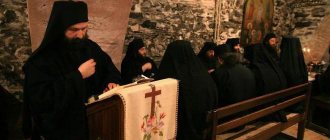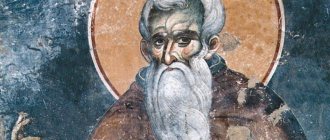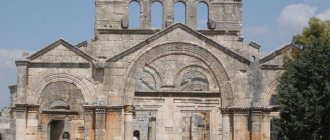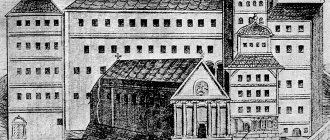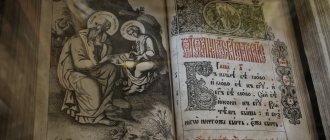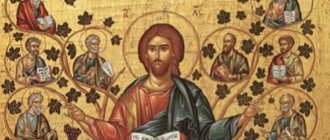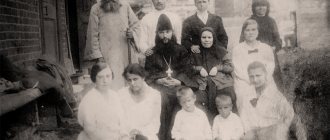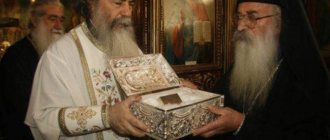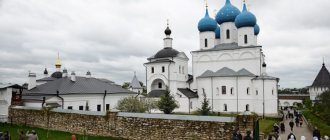The holy monastery of Hilandar occupied one of the densely forested picturesque valleys in the northeast of the holy Mount Athos, approximately 4 km from the sea and the monastery of Esphigmen. The Hilandar monastery was founded by the Serbs at the end of the 12th century, and, even taking into account the fact of its remoteness, the place is still considered the main shrine of Orthodox Serbia.
© Maxim Ershov
Due to the continuous support from the Serbian rulers, the place grew rapidly and became rich, and today it ranks fourth in the hierarchy of the monasteries of Mount Athos. Among pilgrims, Hilandar is known for its Slavic hospitality, comfortable conditions of stay and a huge number of relics even by Athonite standards, one of which was the revered icon of the Mother of God “Three-Handed”, created in the 8th century.
Archandarika outside the monastery, occupying the former monastery stable, © Maxim Ershov
History of the holy place
One version says that the name Hilandar came from the name of the founder of the local monastic community, others claim that the monastery was so named because of its shape, which has something in common with the outlines of a Byzantine ship of the Helandion type.
The foundation of the monastery dates back to 1198; its founders were the Serbian ruler Stefan Nemana and his son Rastko, who took monastic vows and took the names Simeon and Savva, and then became the most revered Serbian saints. It was in 1198 that Vatopedi handed over the then-destroyed monastery to father and son. Emperor Alexy III sealed the gift with a decree, which confirmed that the monastery would forever become the property of the Serbs. Father and son put a lot of effort into restoring Hilandar, almost rebuilding it from scratch. Two years after the founding of the monastery, the Monk Simeon died and was buried here. 4 years after this, Savva returned to Serbia and took his father’s remains with him for reburial in Studenica. The brethren were not satisfied with this version of events, nevertheless, Abbot Methodius had a dream in which the monk told him that the relics should be returned to Serbia, and a grapevine would grow at the burial site. Soon after the departure of Bishop Savva with the relics made of stone, a vine appeared under the empty churchyard, and grapes still grow there.
Pier of the Hilandar Monastery, © Sergey Kozlov
From 1293, because of its second ktitor, the Serbian king Stefan Uros Milutin, the place began to prosper again, giving Serbia many God-loving bishops and patriarchs. History confirms that diligence and spiritual wisdom have always been a priority for the Hilandar monks. Spiritual literature, translated within the walls of this monastery from Greek into Slavic, acted as the main source of spiritual enlightenment of the country, and through it other lands were also filled.
Other monasteries lost their benefactors during the fall of the Byzantine Empire, but Hilandar was fortunate to prosper throughout the entire period of Turkish rule. He existed steadily throughout this period, and from among his brethren he was elected archpriest many times. The monastery fell into decline only in the 17th century after the Turks abolished Serbian autonomous rule and forced the country to submit to the Ecumenical Patriarch, who served as not only the spiritual, but also the temporal ruler of the Christian subjects of the Ottoman Empire. The work of the monastery was resumed by donations from the Bulgarians and a pious Venetian merchant, later known as the monk Nikanor. The influx of monks from Serbia gradually weakened, but the monastery retained its Slavic character, and by the end of the 18th century Hilandar became largely Bulgarian.
© Maxim Ershov
The Serbian Orthodox Church again became autocephalous only in 1879; 17 years later, King Alexander I of Serbia visited the monastery and paid for the restoration work that the monastery so needed after the fires of 1722 and 1891. Also, thanks to the king, Hilandar was replenished with Serbian monks, he also gave the monastery funds for their maintenance, so over time the monastery again became Serbian.
By the end of the 20th century, the Charter of Savva of Serbia was abolished, which stated that only a viceroy was elected in the monastery, and the abbess was the property of the Mother of God, because of this, part of the brethren left the monastery. The year 2004 was marked by a severe fire, then in just one night the monastery was half burned, the fire spread from the abbot’s cell to the archondarik and fraternal cells. Now among the inhabitants of the monastery there is an opinion that the fire acted as a fair punishment for departing from the Typica of St. Sava.
© Maxim Ershov
Icon
There are many lists of this saint, which many people keep in their homes. The icon of the saint can be found in the Moscow Church of the Apostles Peter and Paul. The first image is considered original and is located on Mount Athos. On it he was painted as an old man with an open scroll in his left hand. He is wearing a priest's robe. Although it carries holiness and righteousness, at the same time it reflects peacefulness, humility and belligerence.
You can recite sacred texts both in front of her in the temple and at home. If you don't have it, don't worry. Try to be alone and just focus on what you are saying. There are also lists where he is depicted with his son. They stand at full height in front of the believers.
The best article for you, go to: What does the Icon of Seraphim of Sarov help with?
It seems to many that reading the prayer to Saint Simeon the Myrrh-Streaming on Remembrance Day has special power. They fall on February 26 and June 10. In a sense, this is true, but for the most part, what is true is your sincerity and the power of faith. Only an open heart and good thoughts can lead to a positive result. Here is the text of most of the address used.
“O holy and righteous Simeon, with your pure soul reside in the heavenly abodes in the presence of the saints, and rest incorruptible on the earth with your body!
By the grace given by you from the Lord, pray for us, mercifully look upon us, many sinners,
even unworthy, both with faith and trust in your holy and healing icon of those who flow, and ask us from God for forgiveness of our sins, we fall into misery in multitudes all the days of our life and, like before others, for from green eye diseases we can see no less than those who can heal our eyes. ,
To those who were near death from severe ailments, healing was given, and to others you bestowed many other glorious blessings;
hereby deliver us from mental and physical ailments and from all sorrow and sorrow, and ask from the Lord all that is good for our present life and for eternal salvation that is useful to us,
so that by your intercession and prayers we have acquired everything useful to us, even if we are unworthy, praising you with gratitude, let us glorify God, wondrous in His saints, the Father and the Son and the Holy Spirit, now and ever and unto the ages of ages.”
Remember that before you start reading, try to abstract yourself as much as possible from what is happening around you. Do not interfere with the desire of others to turn to the saint. Humility and submission have always been welcomed by the Lord.
God bless you!
The best article for you, go to: Saint Evvula of Nicomedia
You will also be interested in watching a video story about Saint Simeon the Myrrh-Streamer:
Sights of the monastery
The appearance of the monastery surprises its guests with obvious Balkan features: the impressive tower buildings have narrow windows and a tier of decorative stone white and red arches, as if transferred here straight from the mountain monasteries of Serbia. The residential building is decorated with white and red wooden terraces, so similar to the caravanserais of the Balkans from the Middle Ages.
The history of the main cathedral of the monastery dates back to the 14th century; at one time it was consecrated in honor of the Entry of the Blessed Virgin Mary into the Temple. Its multi-tiered architecture has a number of Balkan and Byzantine features, bringing it closer to the classical basilicas of Constantinople. The interior amazes with its magnificent frescoes: they are quite modern and have careful attention to detail; their appearance dates back to the beginning of the 19th century. The entrance to the altar is closed with a carved wood panel, behind which is an ancient marble screen. A bowl for holy water, made in the 18th century, is also available for inspection.
The territory of the monastery includes 11 small churches, they contain a huge number of relics, including the staff with the lid of the tomb of St. Sava, here tourists can admire the tree of his vine, the fruits of which were used to treat female infertility, particles of the Life-giving Cross of the Lord, a crown of thorns and a shroud Christ, as well as particles of the relics of John the Baptist and the prophet Isaiah. The monastery museum keeps a number of church vestments and chairs decorated with mother-of-pearl. The Hilandar Monastery has a magnificent treasury and a library with a rich collection, it boasts 800 Slavic manuscripts, parchment manuscripts with church texts and music, as well as 7 thousand book editions.
Monastery tower, © Maxim Ershov
FIGHTING HERESY
“Living in the world, Simeon the Myrrh-Streaming was a politician, a ruler, sometimes cruel,” explains Archpriest Maxim Brusov, rector of the Trinity Church in Dmitrov.
“He really overthrew his brother, who died soon after.” He made decisions about bloody wars. But Simeon's great achievement was the unification of Serbia and the strengthening of Orthodoxy in it. Thanks to Nemanja's diplomatic and military successes, Serbia returned its lands seized by the invaders - Kosovo, Travuniya, Hvosno and others. Just recently, the microscopic Raska became a powerful European state.
Stephen had to shed blood in his own country. At that time, Serbia was gripped by the ideology of the Bogomil heresy. The Bogomils believed that the entire material world was the creation not of God, but of Satan. They rejected the Old Testament, the cross, relics, icons, the holiness of the Mother of God and, in general, the entire cult of saints, the construction of churches. Stefan got rid of the Bogomils literally with fire and sword and, according to contemporaries, “completely eradicated this damned, ungodly faith from the state.”
Also, Stefan, being a zealous Christian, built churches and monasteries and supported monasticism.
Shrines of the monastery
The cathedral church of Hilandar surprises with its collection of miraculous icons of the Mother of God. The most famous is the “Three-Handed Lady,” standing on the abbot’s place in the monastery and demonstrating the authority of the Mother of God over the monastery.
The monastery also preserves an ancient vine that rose from the ground where Simeon the Myrrh-Streaming was buried. Now the appearance of the vine leaves much to be desired, nevertheless it blooms and bears fruit, its fruits act as a cure for diseases and infertility. The grapes collected from it are dried and given to pilgrims who come to pray for the continuation of offspring.
Speaking about the shrines of the monastery, we must not forget about the fragments of the gifts of the Magi to the Infant Christ, which also include the instruments of the Lord’s passion, particles of the True Cross of the Lord, and a number of relics. The altar of the cathedral became the repository of the Gospel; white leather was used to create its sheets, all inscriptions were made in gold letters.
© Maxim Ershov
BROTHER OR HOMELAND?
The Monk Simeon the Myrrh-Streaming was born at the beginning of the 12th century into the family of Zhupan Zavida, the ruler of Raska - as Serbia was called in the Middle Ages. His worldly name Stefan Nemanja literally thundered in the arena of historical events in Europe at that time for many decades.
Serbia, which had lost most of its lands by the 12th century, was under the protectorate of Byzantium. Its rulers, the zhupanov, were appointed from Constantinople. Periodically, the Serbs rebelled against Byzantine oppression, but they ended in defeat.
After another unsuccessful Serb uprising, the Byzantine emperor appointed Tihomir, Stefan's older brother, to the post of zupan. Tihomir was known for his loyalty to Byzantium. Since childhood, Stefan dreamed of his homeland gaining independence. Therefore, he, having gathered an army of Serbian patriots, overthrew his brother, reigned on the throne himself and made a desperate attempt to fight with Byzantium again. True, that time it also ended in failure.
How to get to Hilandar Monastery in Ouranoupolis
You can get to the place by ferry, traveling from Ouranoupolis or Daphne towards the monastery pier. Pilgrims can leave the pier in a monastery car, which arrives there specially in time for the arrival of the ferry.
Travelers can walk from the Esphigmen monastery, the whole journey will take about 40 minutes, from the Zograf monastery it will take 2.5 hours, while the Vatopedi monastery is the farthest from Hilandar, walking from it will take 4 hours.
If you wish, you can use the Uber taxi service.
